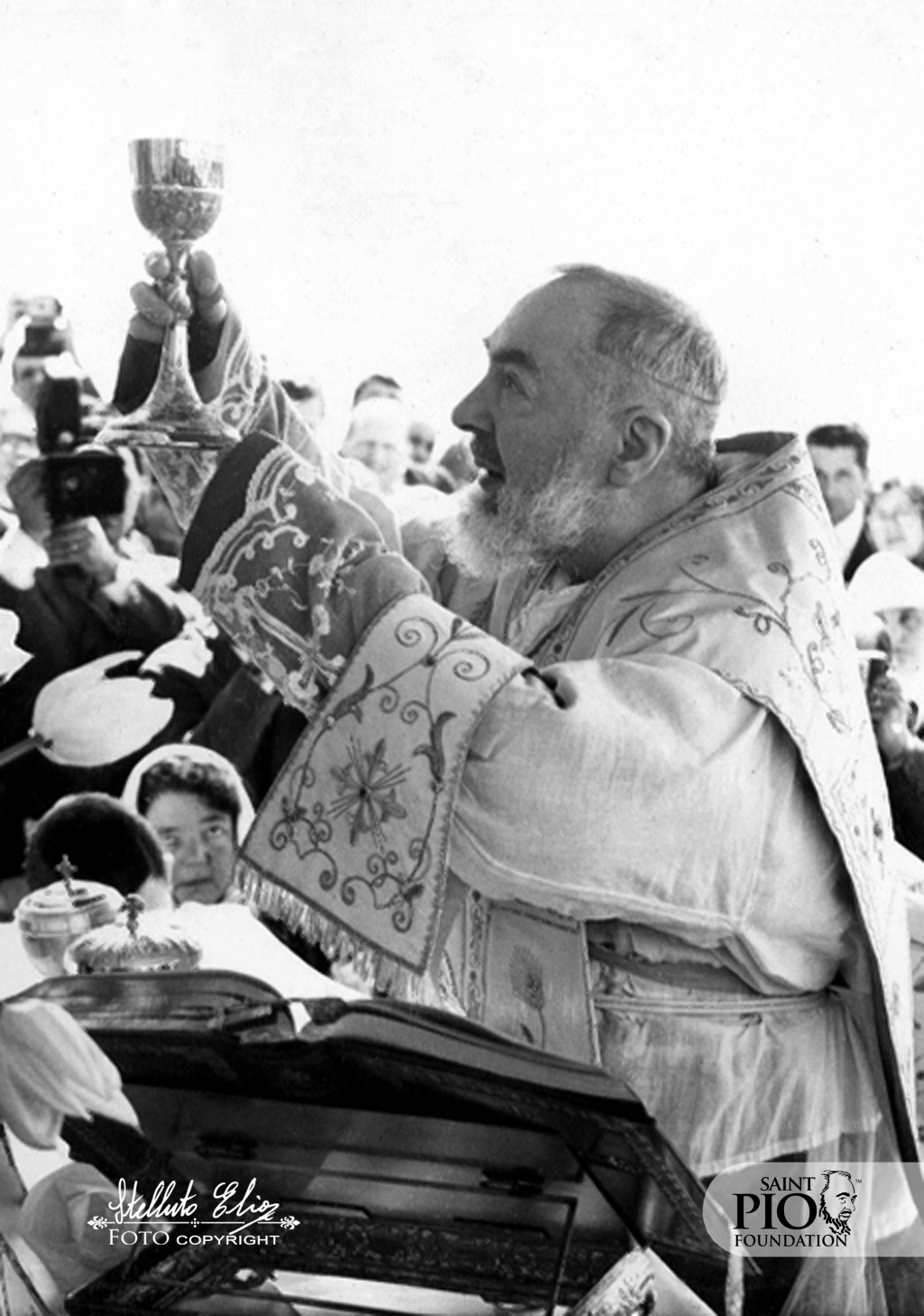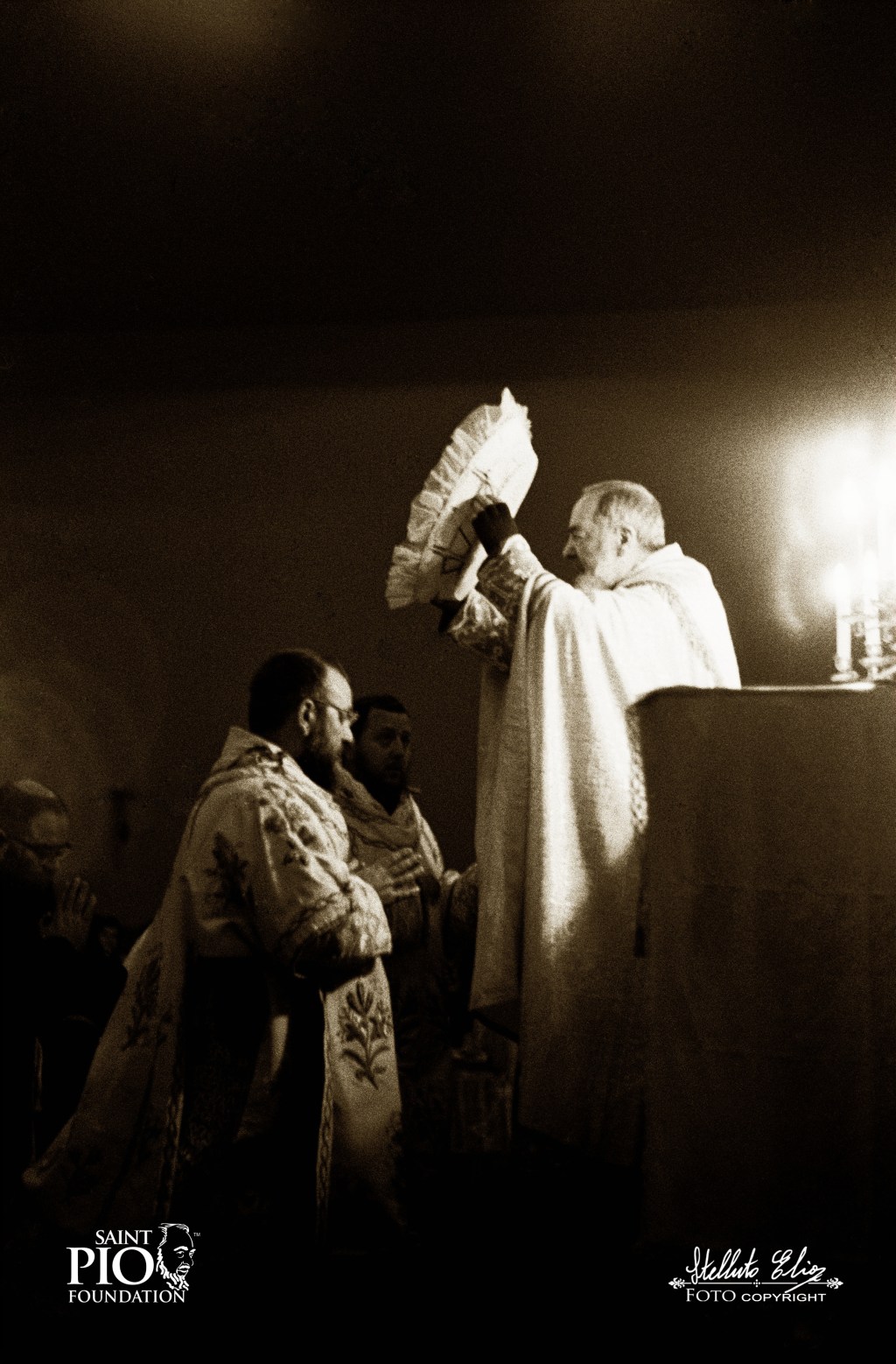"Padre Pio wasn't just a spiritual father ... For me, he was my dad!" says Elia Stelluto, talking to Aleteia about his very special bond with Padre Pio.
Born in 1935 in San Giovanni Rotondo, the almost-90-year-old Stelluto still has vivid memories of his childhood near the Capuchin convent. There, he formed an affectionate bond with the friar, who already enjoyed a reputation for sanctity during his lifetime.
“I grew up with him, from 1942 onwards, when I became an altar boy at the age of 7 and accompanied him at Mass,” he recalls.
After a "childhood of misery," at the end of which he tried his hand at photography to survive, Elia emigrated to Argentina in 1954 with the rest of his family. He went to join his father and older brother, who had left to try their luck a few years earlier. But the young man was haunted by the memory of Padre Pio's tears during their last meeting before his Latin American exile. Although life in Argentina was more comfortable, he felt the call to return to his roots.

Padre Pio in his daily life
Six months later, he crossed the Atlantic again, this time in the opposite direction, returning to San Giovanni Rotondo for good. Although still a minor, he benefited from the active help of the Italian consul in Buenos Aires, who told him that he, too, was a great admirer of the Capuchin friar. Not only did he facilitate the administrative procedures to enable Elia to return to his native country, but surprisingly, the diplomat himself took it upon himself to convince his parents to let him return to Italy.
Elia would not see his family again until 30 years later. His relatives would eventually return to San Giovanni Rotondo as well, including his "Argentinian" older brother, still alive today and celebrating his 100th birthday in a few days' time.
After his return, Elia Stelluto resumed photographing Padre Pio in his everyday life, despite a rough first experience.
"The first time I tried to photograph Padre Pio during the celebration of Mass, he got annoyed and asked for the carabinieri to come and arrest me! I went to see him after the celebration to ask his forgiveness," he recalls, amused by the mixture of firmness and benevolence that emanated from the friar.
Winning Padre Pio’s trust
Over the years, despite working without flash and with candles as the only lighting, Elia managed to "show the saint in all his simplicity." Despite the dark atmosphere of the convent, which logically should have rendered the photos unusable due to the silver technique of the time, a strange light emanates from the saint's face.
"These are mysterious photos ... Padre Pio was luminous, and I can't explain it," he assures us.
Fifty-six years after photographing him at his last Mass, Elia Stelluto continues to watch over an extraordinary archive, from which these 10 new photos have been extracted and made available to the public on the ilverosanpio.org website. This is thanks to the initiative of the president of the Saint Pio Foundation, a US-based organization chaired by Italian opera singer Luciano Lamonarca, who has lived in New York for 15 years.
Making Padre Pio accessible to all
Lamonarca attributes to Padre Pio's intercession the birth of his and his wife’s child Sebastian. The child was naturally conceived after doctors had told them there was no cure for their infertility. Lamonarca considers it miraculous.
Fascinated by the Capuchin friar, the Italian tenor has set to music the "Song of Saint Pio," composed at the time of his death in 1968. He travels the world to raise awareness of this saint, who fascinates and moves him.
"In every country, there are many people who will never be able to come to Pietrelcina and San Giovanni Rotondo, but it's up to us to make the saint accessible to them," he reflects to Aleteia.
John Paul II and Padre Pio united in suffering
Luciano Lamonarca points out that the Capuchin friar "also invites us to reflect on our relationship with suffering."
"Today, we seek to ward off the slightest headache, the slightest annoyance. Padre Pio teaches us instead to suffer with decency, to offer our suffering to the Lord, because everyone suffers. In this sense, we go against the grain, but we entrust ourselves to St. Pio to help Catholics and non-Catholics alike to live with dignity.”
The presentation of these photos took place at the Vatican on the 10th anniversary of the canonization of John Paul II, a pope whose life was marked by suffering, and who had a close relationship with Padre Pio after meeting him at San Giovanni Rotondo in 1948.

Andrea Tornielli, editorial director of Vatican Media, recalled the impact of young Fr. Karol Wojtyla's visit.
"It marked his life, with a relationship that continued, also on a mystical level, as many letters attest. From Krakow, Archbishop Wojtyla would ask Padre Pio for prayers and graces," explained the Italian journalist. He added that this link was not self-evident in a context of great mistrust in the Vatican towards the Capuchin friar, whom some accused of being an impostor.
Padre Pio's canonization
Padre Pio was "a mystic, always obedient to the Church, despite all the attacks against him. He shows that holiness also means accepting decisions that may seem difficult and incomprehensible," said Andrea Tornielli.
John Paul II put an end to the debate by beatifying Padre Pio in 1999 and canonizing him in 2002. Pio is thus "an ever-present saintly figure, a saint of the people, who has entered the collective imagination."
This link between Karol Wojtyla and Padre Pio was decisive, as Elia Stelluto acknowledges.
"There was a lot of opposition to him within the Church. If it hadn't been for John Paul II, Padre Pio wouldn't have been made a saint," says the man who remains one of the last witnesses to this extraordinary spiritual adventure.









